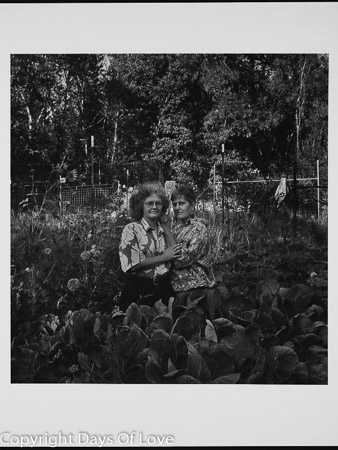

Partner Tee Corinne
Queer Places:
Reed College, 3203 SE Woodstock Blvd, Portland, OR 97202, USA
Brown University (Ivy League), 13 Brown St, Providence, RI 02906
Poppyseed, 1199 Sunny Valley Loop, Wolf Creek, OR 97497
Granite Hill Cemetery, Grants Pass, Josephine County, Oregon, USA
 Beverly Anne Brown
(February 21, 1951 - October 27, 2005) was born in Fresno, California
to Ann L. Brown and Elton John Brown. Her parents were Lithuanian
immigrants who later settled in Redding, California where Brown
attended local public schools. In Redding, Brown learned first-hand about
rural blue-collar life and her first foray into intellectualism came from
the local chapter of the conservative John Birch Society. She later
attended Reed College from 1969-1971 majoring in Philosophy and Theology.
In 1972 Brown began what was to become a lifelong career of advocating for
social justice. She began in Providence, Rhode Island where she helped
organize the unionization of library workers at Brown University and
worked with women's consciousness raising groups. It was in Providence
where Brown decided to ‘come out’ officially as a lesbian. From 1974-1975
she lived in Utah and worked as a women’s health education organizer.
Beverly Anne Brown
(February 21, 1951 - October 27, 2005) was born in Fresno, California
to Ann L. Brown and Elton John Brown. Her parents were Lithuanian
immigrants who later settled in Redding, California where Brown
attended local public schools. In Redding, Brown learned first-hand about
rural blue-collar life and her first foray into intellectualism came from
the local chapter of the conservative John Birch Society. She later
attended Reed College from 1969-1971 majoring in Philosophy and Theology.
In 1972 Brown began what was to become a lifelong career of advocating for
social justice. She began in Providence, Rhode Island where she helped
organize the unionization of library workers at Brown University and
worked with women's consciousness raising groups. It was in Providence
where Brown decided to ‘come out’ officially as a lesbian. From 1974-1975
she lived in Utah and worked as a women’s health education organizer.
By 1978 Beverly Brown moved back to Oregon where she worked various jobs that allowed her to combine her interests in women and lesbian issues, commercial food preparation, and resource management. She became a member of the group Josephine’s Environment Matters!, which was advocating against strip mining in Josephine County, Oregon. She also lived at a women’s intentional community in southern Oregon called WomenShare. After these experiences Brown began to think seriously about the necessity for civic involvement and capacity building among communities in rural areas. These questions would later inform how and why she would begin the Jefferson Center for Education and Research.
In 1986 Brown began an internship at the Highlander Research and Education Center in New Market, Tennessee, where she encountered an education process called popular education and learned how important infrastructure is to the success of any advocacy group. She took these lessons home with her when she returned to Oregon in 1987. Brown continued her research by conducting numerous interviews with rural Oregonians which would later form the basis of her book, In Timber Country, Working People’s Stories of Environmental Conflict and Urban Flight (1995). She spent time in the early 1990’s building up a board of directors for her new non-profit idea. It was during this time that she met the woman who would become her future partner, the artist and lesbian advocate Tee Corinne. Brown and Corinne lived together at their home they named Poppyseed, located in Sunny Valley, Oregon from the early 1990’s until 2004.

Photo by
Robert Giard, Rights Notice: Copyright Jonathan G. Silin (jsilin@optonline.net)
In 2004 when finalizing the start-up of Jefferson Center, Brown called upon her varied and interrelated interests and asked, "what issues would be important to investigate across lines of culture, class, race and language?” She decided that the Center should concentrate its efforts on issues that were important to rural and other blue collar workers who worked in the non-timber forest product and natural resource arena and who often have no recourse but to work as contingent laborers. Brown wanted the Jefferson Center to help facilitate more civic involvement and engagement among and between these groups. Brown saw that these workers were “invisible” to the elite environmental movement while at the same time being completely dependent on the timber and natural resource industry. The Jefferson Center operated from 1994-2007 and is now dormant following the death of Beverly Brown from cancer on October 27, 2005.[1]
My published books: